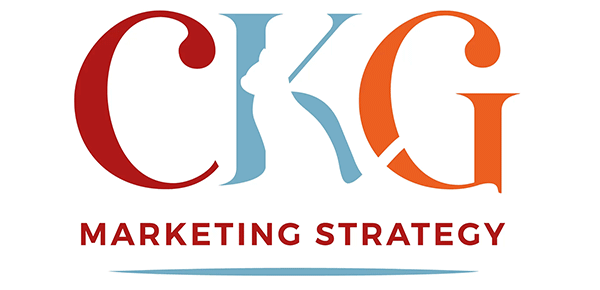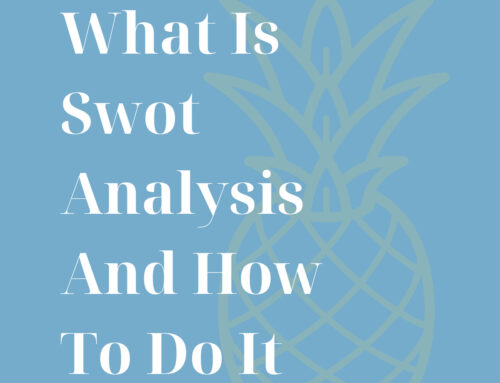Understanding Your Target Audience
An understanding of your target audience is essential in any marketing strategy. This group of people are the ones that are most likely to buy from you, as they need your product or service.
When they also share your values, you create brand advocates who are loyal to your business and share their experience with others.
The target market
You can break this down into three categories:
1. Target audience
2. Target market
3. Target segment
Your target audience is the widest net, where you want as many people as possible hearing your message, regardless of whether they buy or not. For example, if you run a pet shop, animal lovers would fit in this category. This is a large group of people who might be interested
in your marketing.
Your target market sits within the audience, and is who most fits the profile of your buyer. This could be pet owners who would actually buy and use your products.
The target segment is broken down further still within the market, to individual groups of people that you want to target. For example, designer-doggy mums.
The data you collect is broken down into two categories, and you’ll need to collect both to get a more rounded picture of who your audience is and what they care about.
Quantitative
Quantitative data is the ‘who, what, where, when, how many, how much’ side of the data that complements the qualitative data.
The easiest way to find this data is through the data you’ve collected from places such as your website or sales team, or questionnaires, surveys or polls. You can find out things like how many people buy your product, how easy they find it to use, and what attitude they have
towards the price, competition and delivery method, etc.
Your qualitative data will give you a picture of the type of people who buy from you and their current expectations on issues such as price, quality, demand, availability, etc. This may be different from who you thought your ideal clients are, so it’s important to look outside the
business rather than rely on insider opinion.
Qualitative
This is the ‘why’ behind purchase decisions. Qualitative data gives you a deeper understanding into your customers’ mindset, motivations, feelings, wants and desire – what makes them buy, their values, how they want to feel and how your product or service meets that desire.
Qualitative data comes from asking questions in focus groups and of existing customers. You can find it in reviews and testimonials of like products and from competitors. Check social media for comments and reviews. Or you can ask directly for feedback in calls and questionnaires of your own clients – if you ask the right questions, this is where you can get the most valuable data. You can also get this data from your customer support team.
It can tell you about the expectations the customer had and what met those expectations and what was missing. When you compare this to your or your competitors’ marketing, you can see what worked well and what didn’t.
Pain points and expectation
People do things for two reasons – to gain pleasure or avoid pain – and the most powerful driver between the two is to avoid pain.
Because of this, it’s important to understand the motivations behind customers buying decisions in order to appeal to a larger number of people.
What are the pain points that the customer is trying to avoid? You can take an educated guess at this, particularly if you built your business after overcoming a similar problem, but always try to get real-life data from people outside the business for an independent viewpoint.
The one exception to this is for luxury items, as this is usually about gaining pleasure. However, this always depends on your target market, as it could just as well be avoiding FOMO or keeping up with the Joneses that drives these purchases.
Identifying pain points
There are several methods to go about identifying the pain points of your target market.
1. Talk to your existing customers
You can do this though interviews, questionnaires, surveys and polls, focus groups and casual conversation. Open-ended questions give more scope for creative answers, but they are more difficult and time-consuming to answer, especially if done online. Questions that have tick box answers, or rate-on-a-scale answers do better if they are sent electronically, and you can still gain valuable information by using these.
2. Observations
Watching how people use your product can also show you what pain points they are trying to fix, especially in SaaS products.
3. Feedback and reviews
Bad reviews in particular tell you a lot about the pain point that people are trying to fix because they tell you exactly how the product didn’t work and what they are still struggling with. They also give you a good understanding of what the expectation was when the purchase was made, so you can make sure that your marketing is in alignment with that expectation.
You can look at both your own and competitor reviews for this information. Also try related product reviews as this could also be a good source of information. For example, if you sell a course, what do reviews on Amazon say about books on the subject. Again, look to the bad
reviews first, as this is the pain point not addressed.
What to do with your target audience data
The data you collect gives you a deeper understanding of your customers and allows you to focus your marketing on people who want and need your product or service, rather than a blanket approach to see who you catch.
It also allows you to find areas that could be improved upon in your business to increase your market and customer satisfaction.
You should also put together a client avatar: a fictitious person who represents your target audience. This client avatar gives you a focus point when creating your messaging so that it sounds personal and resonates with your audience.
If you need help identifying your target audience, please get in touch with Cat on: cat@ckgmarketing.co.uk





